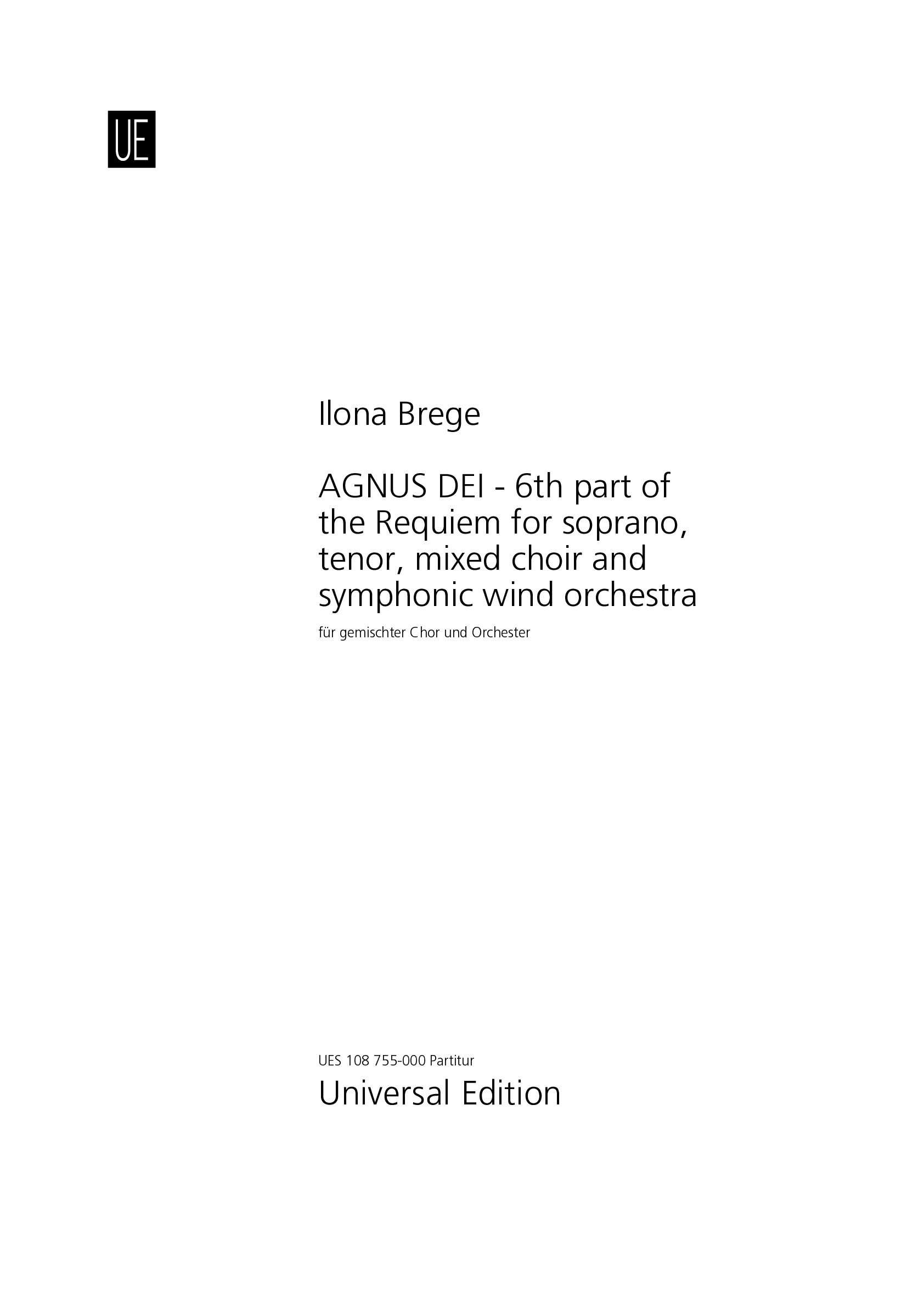.png)
Digital edition
immediately available as PDF
€11.95
Payments:
Shipping:
Ilona Brege
AGNUS DEI - 6th part of the Requiem for soprano, tenor, mixed choir and symphonic wind orchestra
UES108755-000
Type: Dirigierpartitur
Format: 297 x 420 mm
Pages: 8
Digital edition
immediately available as PDF
€11.95
Payments:
Shipping:
Audio preview
Description
The Requiem for soprano, tenor, mixed choir and symphonic band is composed during the years 2009-2010.
Two first parts Requiem aeternam and Dies irae were performed on 10th of April 2009 in Riga, St. John Church.
The completed REQUIEM world premiere was on 25th of March 2010 in the Riga Cathedral. Sonora Vaice (soprano), Ingus Petersons (tenor), State Academic Choir "Latvija", Riga Chamber Choir "Ave Sol", Riga Professional Symphonic Band, conductor Andris Poga.
Latvian radio 3 "Klasika" named I. Brege's Requiem as the best new work of 2010 in Latvia.
The following performances of the Requiem were conducted by Martins Ozolins (2012) and Valdis Butans (2019).
Requiem by Ilona Brege consists of seven parts: Requiem aeternam, Dies irae, Domine Jesu Christ, Sanctus, Libera me, Agnus Dei, Lux aeterna. Total duration is about 72 minutes.
The last three parts of the Requiem form a stylistically unified concept.
“Libera me” is a soprano solo, in the middle enriched with a small tenor solo and the singing of men’s choir. Music publicist Orests Silabriedis in the magazine "Muzikas saule" on March 30, 2010, writes, that “Libera me” - “is generally recognized as the most mystical and conceptually convincing part of the Requiem” and, in his opinion, the highest point is incredibly human recitative.
The middle part of the three concluding - "Agnus Dei" is compact and relatively short, where the ascetic choir’s singing is intertwined with the colorful and harmoniously rich atmosphere of orchestral sounds. The composer does not use powerful instruments like cornets and trumpets here, nor are there any vocal soloists.
The last part "Lux aeterna" of the I. Brege's Requiem runs at a slow pace, allowing lingering in bright and contemplative moods. Music critic Ievina Liepina wrote in the newspaper “Kulturas Forums” on April 9, 2010, that there are two emotional culminations in the Requiem: the already mentioned excellent Latvian “Lacrimosa” from "Dies irae" and the final part - the finely crafted, fragile and exciting “Lux Aeterna”, which in the context of the cycle performs more the functions of a coda. Through bells and campanelli, through in unison sung “Amen!” the musical material forms an associative bridge to the beginning of the cycle.”
More information
Type: Dirigierpartitur
Format: 297 x 420 mm
Pages: 8

